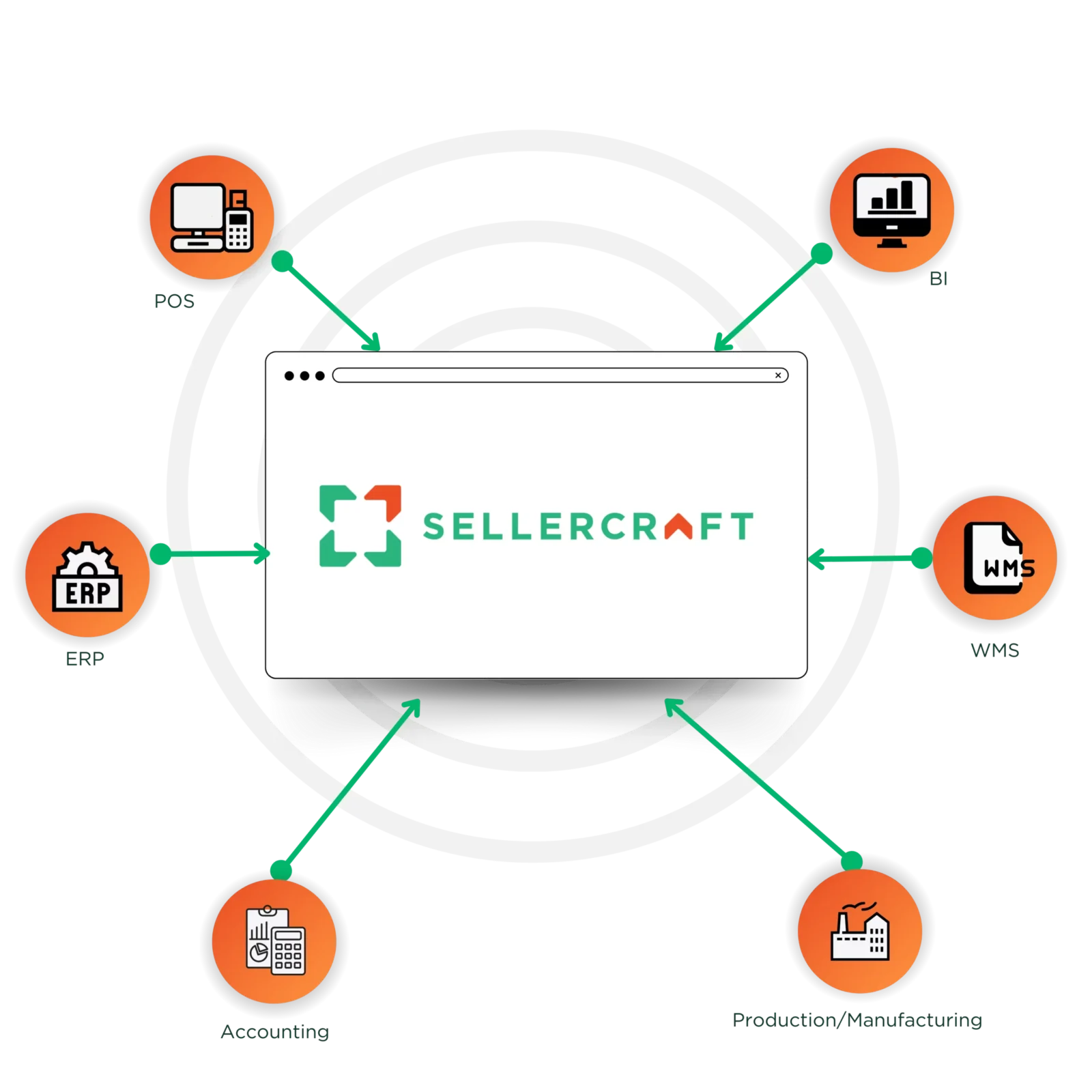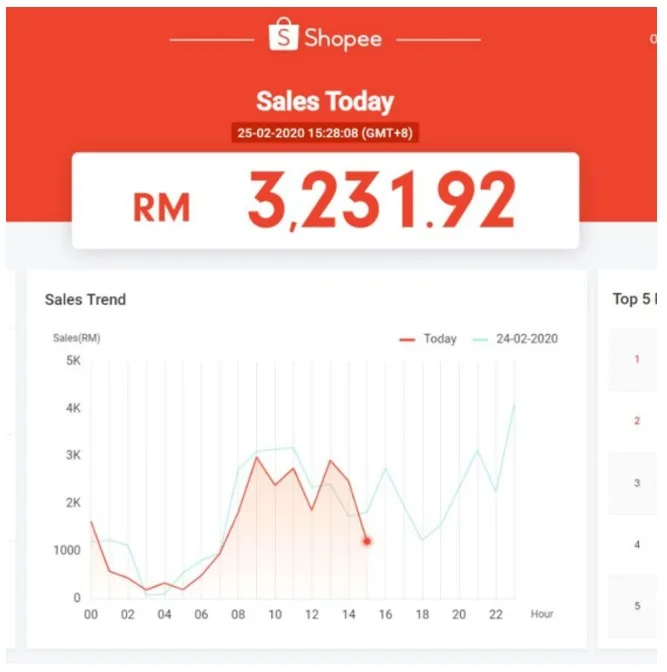Seamless Cross-Border Strategies to Grow E-Commerce Sales
Learn how to expand e-commerce operations beyond domestic markets by using integrated technological solutions and adaptive operational strategies.

Expanding beyond your home market can feel like navigating uncharted waters—exciting, full of opportunity, but riddled with hidden challenges.
Imagine a homegrown fashion label in Kuala Lumpur that suddenly starts receiving orders from Singapore, Indonesia, and beyond. Without the right systems in place, you’ll face oversold products, delayed shipments, and frustrated customers.
In this article, we’ll explore practical strategies to build a seamless cross‑border e‑commerce operation—so you can grow confidently, delight customers, and scale profitably.
Why Cross‑Border E‑Commerce Matters
Cross‑border e‑commerce matters now more than ever. Southeast Asia’s online retail market is projected to grow at a 25% CAGR, reaching over USD 200 billion by 2025, with Indonesia, Vietnam, and the Philippines leading in year‑on‑year growth.
By selling in multiple countries, you not only tap into fresh demand but also diversify your revenue streams, cushioning your business against local economic shifts and seasonal dips.
Brands that master cross‑border logistics and localization gain a clear competitive edge, delivering faster, more personalized experiences than those selling domestically only.
Regional E‑Commerce Growth Potential in Southeast Asia
Southeast Asia’s online market is on a rocket trajectory. Indonesia added over 35 million new online shoppers in the past two years, and Vietnam’s e‑commerce penetration has climbed past 25 percent.
These country‑specific insights underscore why cross‑border sales aren’t just an option—they’re essential for any brand seeking sustainable growth in the region.
Tap into fresh demand and diversify your revenue streams, cushioning your business against local economic shifts and seasonal dips.
Overcoming Data Fragmentation with Unified Systems
One of the biggest hurdles in selling across borders is fragmented data.
When orders pour in from your website, marketplaces like Shopee and Lazada, and social media shops, disconnected spreadsheets and siloed systems quickly become unmanageable.
A unified “single source of truth” for orders, inventory, customer profiles, and marketing performance is essential.
Start by mapping every tool and platform you use, then choose an integration approach—APIs for real‑time syncing, middleware for bridging legacy apps, or custom connectors for complex setups.

Automate core workflows such as inventory updates, restock alerts, and segmented email campaigns, and roll out integrations gradually, testing each link before adding the next.
Streamlining Logistics for Faster Delivery
Logistics and fulfillment present another layer of complexity.
Cross‑border shoppers are willing to pay a premium for predictable shipping and easy returns, so partnering with regional carriers who know local customs processes and last‑mile nuances is key.
Distributed warehousing—positioning inventory closer to customers—cuts delivery times and avoids cross‑border fees. Integrate shipping APIs to provide real‑time tracking updates, and proactively alert customers to any delays.
Streamlined returns are equally important: clear, localized return instructions and pre‑paid labels help maintain loyalty when customers need to send items back.
Achieving True Localization in Every Market

Localization goes far beyond translating your website. Shoppers respond best to content that speaks their language, currency, and cultural context.
Display prices in local currency, factoring in exchange rates, duties, and VAT so buyers see the final cost upfront.
Offer the payment methods they trust—GrabPay and Boost in Malaysia, PayNow in Singapore, GoPay in Indonesia—and integrate with regionally preferred gateways like iPay88 or Razer Merchant Services.
Tailor promotions to local calendars, whether it’s Ramadan deals in Malaysia or National Day offers in Singapore, and use local idioms and respectful cultural references in all your messaging.
Creating a Frictionless Payment Experience
A frictionless payment experience is non‑negotiable. Cart abandonment spikes when payment feels cumbersome or insecure.
Implement one‑click checkout by securely storing payment details (with customer consent), and enable dynamic currency conversion so shoppers can pay in their own currency at transparent rates.
Layer in fraud‑prevention tools that balance security with convenience, flagging only genuinely suspicious orders without blocking legitimate sales.
Personalizing the Customer Journey
Personalization drives repeat purchases and referrals. Unify browsing behavior, purchase history, and support interactions into a central CRM, then segment your audience by location, order frequency, or product interests.
Automate campaigns such as welcome series for new international buyers, cart‑abandonment reminders timed to local time zones, and cross‑sell emails showcasing region‑specific bestsellers.
On your storefront, detect visitor location to display relevant banners—for example, “Free shipping to Singapore for orders over SGD 50”—and surface localized product recommendations.
Introducing Sellercraft’s Brand Market Entry Service
To make all of the above even easier, Sellercraft offers Brand Market Entry—a turnkey solution that handles everything from compliance to marketing, so you can focus on growing your brand.
Seamless Regulatory Compliance and Import Services
Sellercraft handles every aspect of import compliance to ensure your expansion goes off without a hitch.
Our Import Compliance Services cover:

Accelerated Product‑Market Fit (APMF) Program
Before scaling up, validate your product’s appeal in new markets.
Sellercraft’s Accelerated Product‑Market Fit (APMF) program leverages real‑time creator testing to gauge product traction among Southeast Asian audiences.
By launching short content videos, you receive actionable insights, such as total reach, engagement rates, click‑through rates, sentiment analysis, and creator feedback.
You get access to all these within three to four months.

Driving Growth with Performance Marketing
Data‑driven marketing transforms insights into real growth.
Sellercraft’s performance marketing campaigns, powered by targeted creator collaborations and optimized paid media—deliver impressive outcomes.
Brands leveraging Sellercraft see:


Your Roadmap to Cross‑Border Success
Embarking on your cross‑border journey begins with an honest audit of your current tech stack and workflows.
Begin with a Candid Audit of Your Tech Stack and Workflows
Start by thoroughly examining your current technology ecosystem. Reflect on your ecommerce platform, order management systems, and customer service solutions as you review how each contributes to the overall process. Mapping your order flows from initial customer contact to product delivery can uncover hidden bottlenecks or inefficiencies.
Tools such as a centralized dashboard, like Sellercraft’s, allow you to monitor operations in real time and provide a comprehensive view of your system’s health.
Pilot a Small Integration to Validate Product‑Market Fit
Before committing to a full-scale launch, consider testing your international initiatives on a smaller scale.
Begin by integrating with a single key marketplace or a specific social commerce channel. Use a controlled pilot phase to gather insights from early adopters or influencers, assessing how your product resonates with a new audience. Monitoring customer behavior and collecting qualitative feedback during this phase is essential.
This trial period provides the opportunity to make critical adjustments based on real-world data. Such testing minimizes risk and builds confidence in your product-market fit prior to a broader rollout.
Launch Your Platform in Just 30 Days
With a clear strategy in place from your pilot test, prepare a rapid launch plan that outlines every step from technical integration to localized content creation and marketing rollout.
This phase is a focused sprint where tasks are prioritized and milestones set to ensure that the platform goes live within 30 days. Coordinating with well-established marketplaces ensures that each element of the launch is synchronized.
A disciplined schedule, supported by project management tools, allows you to track progress daily or weekly and swiftly adjust tactics as necessary, setting the foundation for immediate visibility and customer engagement.
Localize Your Offerings and Ensure Compliance
Once your platform is ready to go international, the next critical step is tailoring your content and operations to fit local markets. This means translating your website, product descriptions, and customer support materials into the native language and cultural context of your target audience.
Simultaneously, ensure that you meet all necessary regulatory and legal requirements in each new market. Working closely with local compliance experts smooths the path to seamless customs clearance and builds trust with your new customers.
Scale Through a Robust Offline and Online Distribution Network
Expanding your reach requires building a strong distribution framework that connects both your online and offline channels. Utilizing a vast network, such as Sellercraft’s extensive list of partner stores, helps to extend your market presence beyond digital channels.
Establish relationships with reliable local logistics providers to ensure efficient last‑mile delivery. This approach also enhances your B2B restocking process by integrating online order data with offline inventory management. The goal is to create a cohesive system where every link from stock management to final delivery is optimized to meet increasing demand.
Sellercraft understands this, and supports a fast and reliable distribution network that scales alongside your growing sales.
Measure, Optimize, and Iterate Continuously
The final pillar of cross-border success lies in the ability to adapt and improve. Establish real‑time analytics to continuously track essential metrics such as cost per acquisition, conversion rates, and overall customer satisfaction.
Regular performance reviews enable you to identify trends, pinpoint weaknesses, and test new ideas through A/B experiments on campaigns and process adjustments. This data-driven approach ensures that every improvement is aligned with broader business objectives.
As you refine processes and scale operations, the cumulative gains in efficiency and customer experience will drive sustained revenue growth and market expansion.
Take Small Steps for a Big Impact
Success in cross‑border ecommerce is not achieved through sudden, dramatic changes but through a series of deliberate, well-planned steps. Each adjustment contributes significantly to long-term growth.
A strategic partnership with services like Sellercraft not only provides cutting-edge technology but also the market expertise required to navigate complex regional nuances.
With each targeted improvement, your brand can establish a more robust presence in new territories, turning incremental achievements into a thriving global ecommerce operation.
Need help? Reach out to us today.